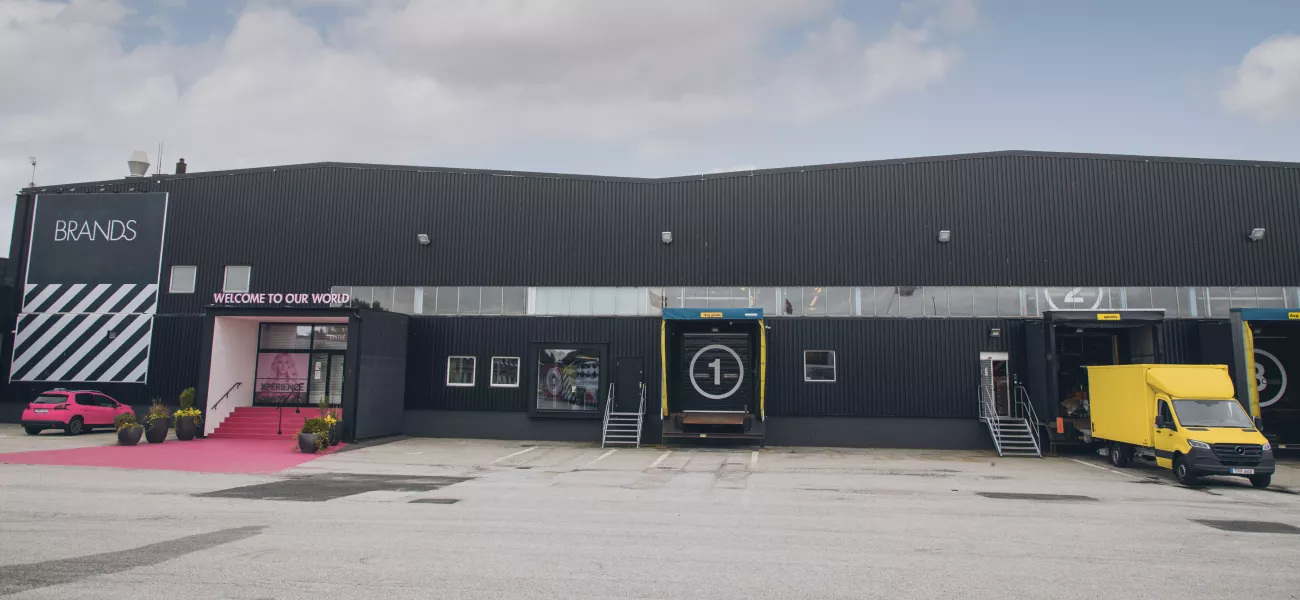
As retail logistics evolves to meet booming e-commerce demands and rising consumer expectations, increased demands on the retail value chain means that distribution centers worldwide are prioritizing safety, security, and efficiency. Network video, equipped with AI and analytics, is supporting distribution centers to achieve this.
The increased volume and value of goods across the retail chain has fueled a rise in theft, with a UK report revealing that warehouse and store employees account for 40%—or £3.2 billion—of retail theft losses. The expanded, higher-paced logistics chain has also required an increased need to reinforce safety for personnel. From automated systems minimizing on-site risks to AI-driven tools enhancing security and productivity, the industry is rapidly innovating to meet demand while protecting assets and employees alike.
While automation is increasing efficiency within logistics centers, the reduction in human involvement means fewer people overseeing the processes along the value chain. This is increasing the importance of technology to ensure the security of the goods in their care, as well as staff safety.
The new wave of retail logistics focuses on a balanced approach—optimizing both speed and safety to achieve operational success and satisfy consumers—all powered by integrated surveillance technology. A networked surveillance system, tailored to meet these challenges, can boost operational efficiency across the board. With the right applications, this technology enhances workflow from order picking to final delivery, ensuring a seamless and secure process at every stage.
Logistics center safety
Within logistics centers, a network camera system can enhance safety by identifying possible risks, and a live audio message warning of the danger can be relayed, or a member of staff can be prompted to take action. To protect against specific potential hazards, cameras with analytics capabilities can also provide automatic alerts. For example, if a camera detects staff or visitors not wearing personal protective equipment, this can generate a warning via a connected audio speaker. Keeping check on lone workers in transport, wearable cameras can also increase safety with man-down alarms and against assaults.
While vehicles on-site, including trucks, vans, and forklifts, as well as passenger vehicles, can present a safety risk to workers and visitors, technologies integrated with network cameras can create a safer environment. Unsafe speed detected by cameras can be addressed with strobe sirens, combining light and sound to warn drivers, while horn speakers can relay audio messages and instructions. Vehicles can also be tracked with radar, combined with license plate recognition technology, enabling easy identification of driving infringements, from making prohibited short cuts through to driving against one-way directions.
Network cameras with analytics can also keep pedestrians safe by identifying their presence, especially in areas dedicated to vehicles, and raising an alarm to the driver. At the same time, a strobe siren can be used to alert the pedestrian and warn against the danger. Mobile cameras (wearable or modular) can also be installed on forklift trucks, helping the driver to have a clearer view in combination with a phone app. This video can also be recorded and used as evidence to support investigations into accidents and near misses to improve safety.
Holding a high volume of goods, it’s not just staff and visitors that need protection, but the stock itself, and fire presents a high risk. Traditional smoke detectors are effective, but as smoke has to penetrate the sensor before detection is triggered, there can be a delay in alarm. Adding camera detection with high quality imaging for low light conditions can add accuracy and reliability to fire defense. Earlier detection becomes possible, and video images make it easier to identify the cause of the fire.
To keep closer track of stock, cameras can monitor deliveries in and out of the distribution center, adding a time and date stamp. This enables easy retrieval from a desktop to review and identify any incidents, errors, or fraud. Adding a panoramic view monitor (PVM) and decoder can also display live video on a monitor.
Ensuring security in the logistics center
With a concentration of goods, often high value, logistics centers are lucrative potential targets for theft, especially at peak periods, such as the run-up to Christmas. This time of the year quite often involves a high proportion of seasonal temporary employees, which can present a higher risk.
Beyond the financial impact, retailers also face downstream problems as a result of theft, such as inventory inaccuracies and dissatisfied customers. As effective retailing relies on accurate inventory levels for effective supply chain management, replenishment, and demand forecasting, theft prevention is key to maintain data accuracy.
A recognized theft technique is to remove items from the picking line or warehouse and then plant them outside the building in readiness for collection by penetrating the perimeter. Protecting the perimeter is therefore key, and the most robust defense can be achieved with a combination of camera technologies, dependent on situational requirements.
To deter the potential of theft from the packing line itself, cameras positioned over the packing desk can keep track of the order. Cloud solution integration with the order system can identify the packing desk number, date, and time, bookmarking these details for fast retrieval to identify incidents, errors, or fraud. This system can also improve customer service, enabling a much faster response to resolve complaints.
Meanwhile, to identify potential criminal activity around the boundary of the logistics center, pan, tilt, zoom (PTZ) cameras can provide detailed visual identification of potential intruders and can be combined with perimeter and area security with motion detection. This technology can give automatic alerts about potential perimeter breaches, as well as zooming in and following suspects. Cameras with in-built alerts and tracking can also improve efficiency, enabling just a limited number of staff to cover a wider number of cameras. Just a limited number of staff to cover a wider number of cameras.
The number of cameras can also be reduced by introducing thermal technologies. Not requiring visible light, these devices provide detection even in hours of darkness or low-visibility weather. Securing the perimeter of the logistics center also means controlling access points. With extensive third-party operation of transport vehicles, particularly if the logistics center uses unmanned loading/delivery bays, verified vehicle access is essential. Network cameras onboard a vehicle can also monitor the consignment. If the cargo hold is opened, an alert is sent to an operator and video of the event is sent to the cloud.
Efficiency in vehicle dispatch and delivery
Loading customer orders onto delivery transport, from checking packages onto pallets or boxes into vans, cameras can create a visual, data-stamped record enabling the validation process.
Also, by using a truck fill rate KPI solution, cameras with analytics can measure the fill rate in real time, enabling optimization based on the process KPIs such as line haul planning, gate personnel requirements, and loading efficiency. Face masking technology can also be added to the solution to ensure GDPR and labor laws.
For last mile delivery validation, wearable cameras are an efficient way of confirming delivery in the expected condition. Package handling during unloading can also be monitored with network onboard cameras.
The future of logistics is undeniably data- and technology-driven. This is where advanced technologies—like network audio and video solutions, and integrated access control—step in. These tools, equipped with AI and data analytics, will soon play a pivotal role in transforming logistics, enabling companies to safeguard their assets, streamline operations, and contribute to sustainability goals. From real-time monitoring of inventory and employee safety to predictive analytics for optimized resource use, these technologies are setting a new standard for safety, security, and efficiency in the logistics sector.
